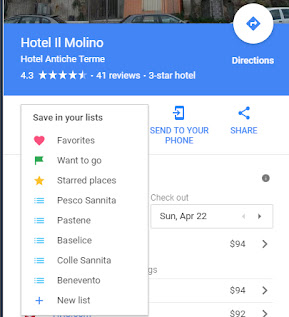Each time you explore a new branch on your family tree, you're sowing seeds that may take years to sprout. Then, one day, it's harvest time.
Yesterday a rich and bountiful crop was suddenly ready, waiting for me to gather it all in.
Do you know that feeling? The moment you realize a dead end is about to connect to the rest of your tree in a meaningful way?
 |
| This is me with our mutual cousins in Colle Sannita in 2005. |
A long-time reader of this blog reached out to me yesterday with her own breakthrough. She'd been studying my tree on Ancestry.com and knew her husband and I had lots of last names in common.
More importantly, we had a small ancestral town in rural Italy in common: Colle Sannita. It's very hard to have roots in that town and not be somehow related. Oh, and by the way, her husband and my dad are a DNA match.
As I began to dig into this new lead, all the last names were important to me. But one captured my immediate attention. I'd seen this name, Polcini, in the town's vital records I downloaded from the Antenati website. It was always in the back of my mind that my grandfather worked for a man named Polcini in the Bronx in the 1930s and 40s. This man lived in his apartment house.
On one of my computer monitors I clicked through my Colle Sannita birth records. I was locating birth records for the Polcini siblings whose names my new contact had given me. On another monitor I opened my family tree software and went straight to my grandfather's 1940 census.
Imagine my "small world" feeling. The 1891 birth record for Damiano Polcini on one screen matched my grandfather's next door neighbor on the other screen! The birth record included his wife's name, and there she was on the census, too.
But that was the tip of the iceberg. My new contact told me where she thought her husband's family fit into my tree. After a little exploration, I discovered an important connection.
One of the Polcini siblings was the grandmother of a distant cousin I met in Canada many years ago. That cousin had given me lots of names to fill out his branch of the tree, but no hard facts. I had zero documentation for his family. Yet.
In one evening, I found lots of hard facts to support my connection to my Canadian cousin.
But hold up. The Polcini side of my new friend's family wasn't even the possible blood connection to my dad and me. I was so excited to find that one sibling in my dad's 1940 census that I hadn't explored the more urgent connection.
You see, my new friend's husband is related to me through the cousins I'm going to visit in Italy in a couple of weeks. They are my father's first cousins, though closer in age to me. I'm related to them through their mother.
But now, it looks as if I'm related to them through their father, too!
Does this hobby make your head feel like it's going to explode sometimes? I expect to put in a short work day today because I must figure out this connection.
The seeds I've planted by going far out on many branches of my family tree are sprouting. And just as the trees are budding outside my window, my family tree is producing new connections.
Isn't this why we never grow tired of this hobby?
Here's why exploring those tangents is so fruitful:






